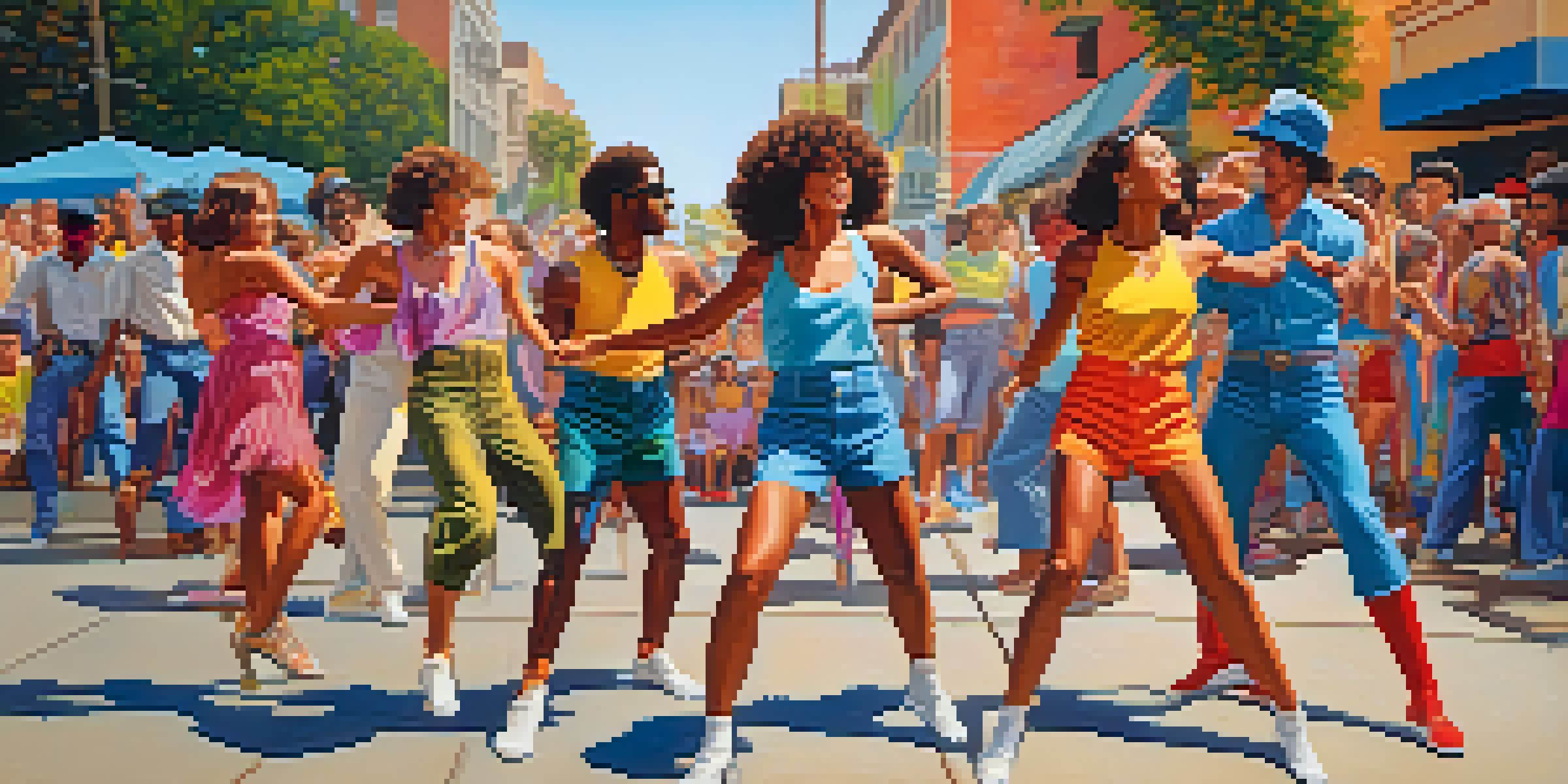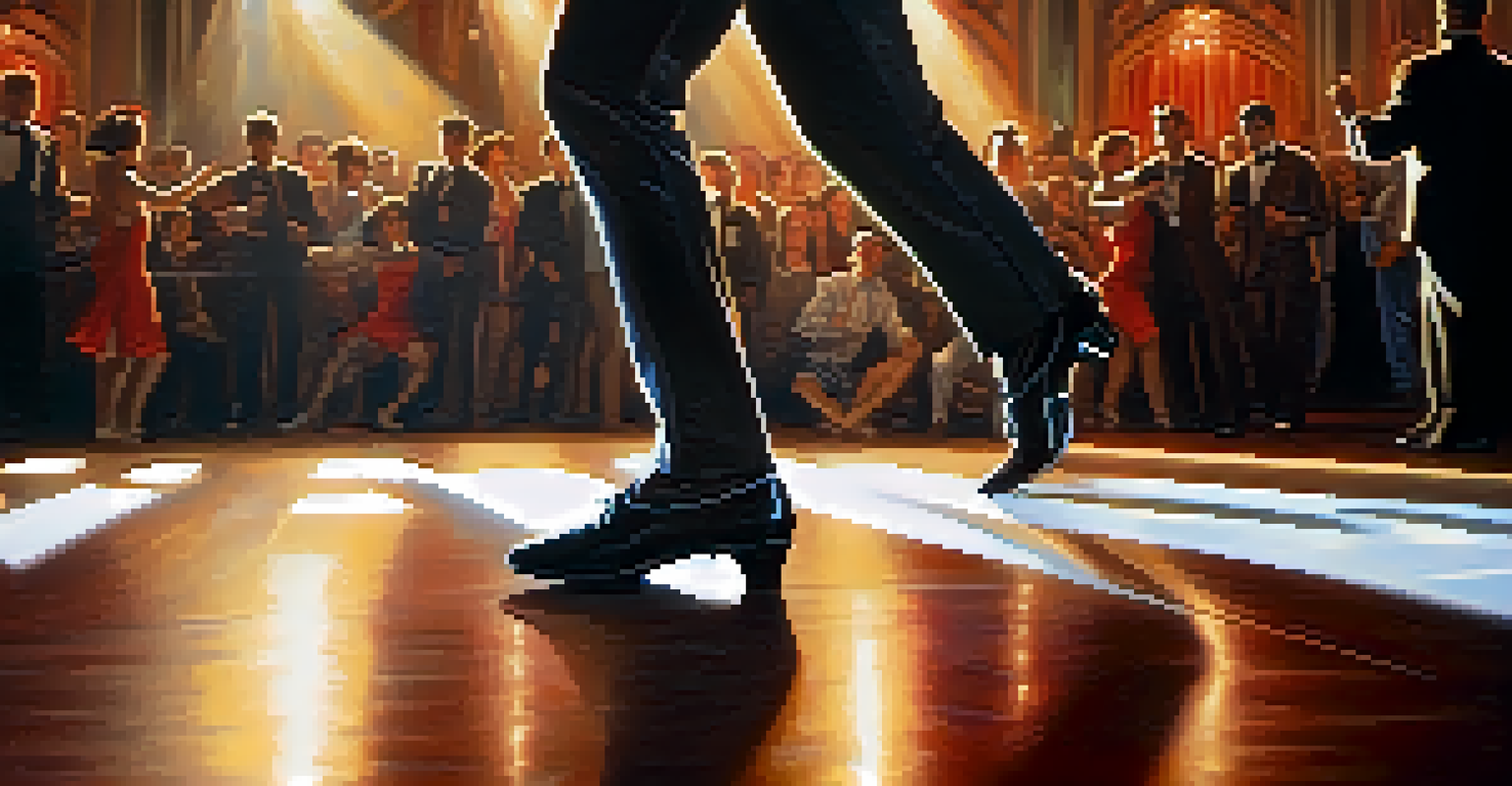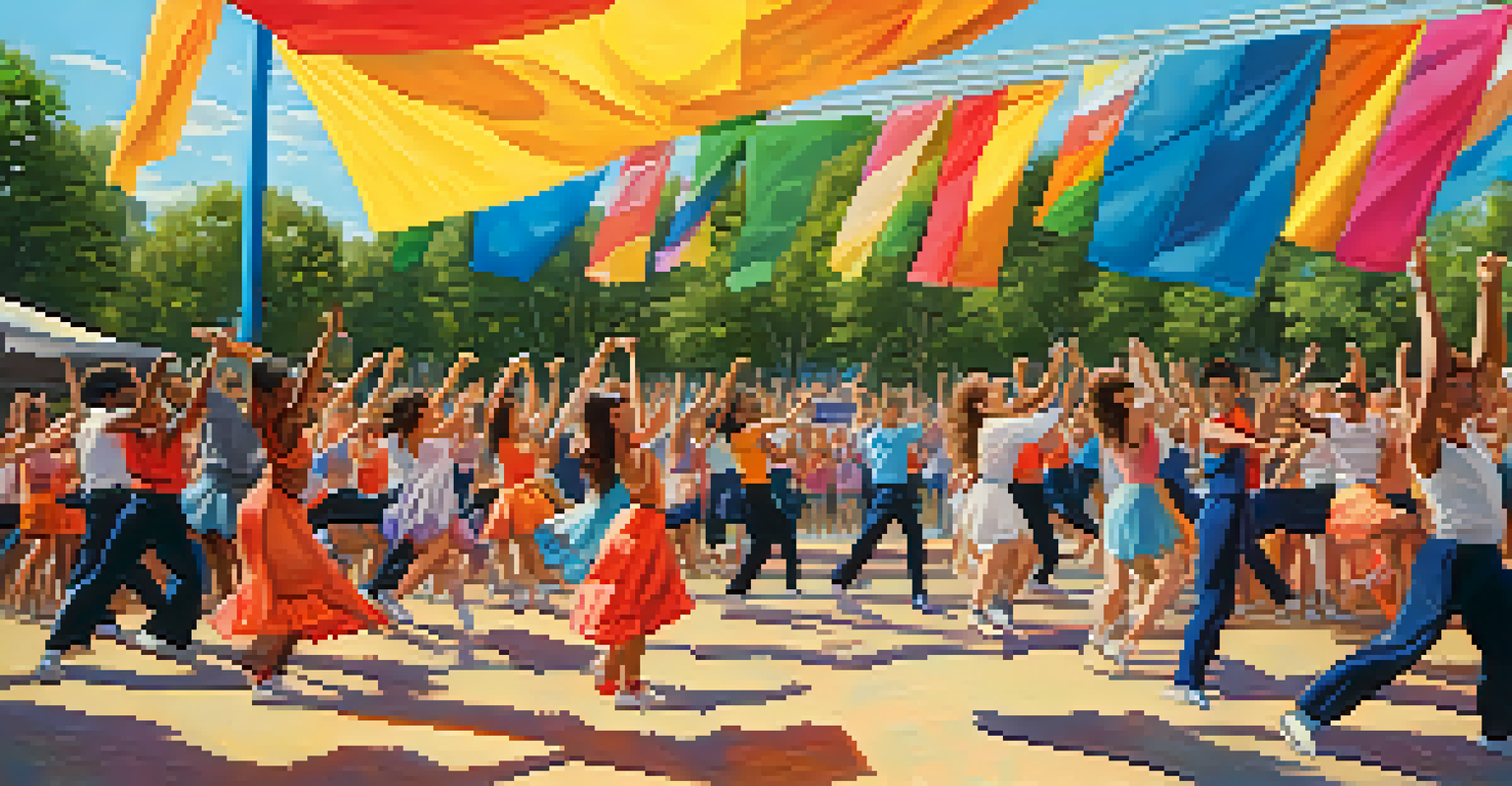Popping and Locking: Origins and Cultural Significance

The Birth of Popping and Locking in the 1970s
Popping and locking emerged in the 1970s, primarily within the vibrant street dance scene of California. These styles were influenced by the funk music of the era, with artists like the Electric Boogaloos showcasing their skills at block parties and clubs. As dancers began to incorporate robotic movements and sharp stops, they created a distinctive style that captivated audiences.
Dance is the hidden language of the soul.
Popping, characterized by quick muscle contractions, creates the illusion of a dancer 'popping' in and out of movements. Locking, on the other hand, involves freezing in place at certain moments, giving the impression of being ‘locked’ in a pose. Together, these styles contributed to the dynamic visual language of hip-hop dance.
The combination of music and movement made popping and locking not just a dance form, but a form of self-expression. Dancers used these techniques to tell stories, convey emotions, and connect with one another, laying the foundation for future styles.
Cultural Influences Shaping Popping and Locking
The cultural landscape of the 1970s played a crucial role in shaping popping and locking. Influences from television shows, such as 'Soul Train,' allowed dancers to showcase their talents and inspired many to join the movement. Additionally, the rise of funk music created a unique rhythm that dancers could embody through their movements.

African American culture was at the heart of these dance styles, drawing from traditional African dances and the broader street culture of the time. This rich tapestry of influences not only informed the dance techniques but also provided a sense of community and belonging among practitioners.
Origins of Popping and Locking
Popping and locking emerged in the 1970s in California, influenced by funk music and street culture.
As these dance styles evolved, they began to absorb elements from various genres, including breakdancing and jazz. This blending of influences helped to diversify popping and locking, making them integral parts of the broader hip-hop culture.
The Role of Popping and Locking in Hip-Hop Culture
Popping and locking are more than just dance moves; they are essential components of hip-hop culture. These styles reflect the creativity and individuality that hip-hop promotes, allowing dancers to showcase their unique flair while adhering to a communal environment. In battles, dancers use these techniques to outshine their opponents, making the dance floor a space for competition and camaraderie.
The dance is a poem of which each movement is a word.
Moreover, the improvisational nature of popping and locking encourages spontaneous creativity. Dancers often incorporate their personal experiences and emotions into their performances, making each routine a unique expression of identity. This emphasis on self-expression has helped to solidify the cultural significance of these dance styles.
As hip-hop culture continues to evolve, popping and locking remain pivotal. They serve as a bridge connecting past and present, linking new generations of dancers to the roots of hip-hop’s rich history.
Popping and Locking in the Global Dance Scene
Despite their origins in the United States, popping and locking have transcended borders and gained global popularity. Dancers from all over the world have embraced these styles, incorporating them into their own cultural expressions. This international interest has led to a vibrant exchange of techniques and ideas among dancers across various countries.
Events like dance competitions and workshops have sprung up worldwide, showcasing talents from different backgrounds. These gatherings not only celebrate the art of popping and locking but also foster a sense of unity among dancers, regardless of their origins. The global dance community has become a melting pot, where diverse influences enrich the styles.
Global Influence and Community
These dance styles have gained worldwide popularity, fostering a sense of unity and cultural exchange among dancers.
This global reach highlights the universal appeal of popping and locking, proving that dance can transcend language and cultural barriers. As more dancers explore these styles, they contribute to a shared narrative that celebrates creativity and connection.
The Impact of Technology on Popping and Locking
Technology has played a significant role in the evolution of popping and locking. With the advent of social media platforms like Instagram and TikTok, dancers can share their skills with a global audience in real time. This exposure has not only helped dancers gain recognition but also inspired new interpretations of traditional movements.
Video tutorials and online challenges have made it easier for aspiring dancers to learn popping and locking techniques from the comfort of their homes. This accessibility has opened the door for a new generation of dancers, creating a vibrant online community where they can share tips, tricks, and inspiration.
However, while technology has facilitated growth in these dance styles, it also presents challenges. The pressure to create viral content can sometimes overshadow the authentic expression that popping and locking embody, reminding dancers to stay true to their roots.
Popping and Locking: A Form of Storytelling
At its core, popping and locking serve as powerful forms of storytelling. Dancers often use their movements to convey narratives, emotions, and cultural experiences. Whether it’s a celebration of personal triumph or a reflection on social issues, these dance styles allow for profound expression.
For example, many dancers incorporate elements from their own backgrounds, merging cultural references with traditional techniques. This blending creates a rich tapestry of stories that resonate with audiences, making each performance a unique experience.
Storytelling Through Dance
Popping and locking serve as powerful forms of storytelling, allowing dancers to express narratives and emotions through their movements.
Moreover, the improvisational aspect of popping and locking allows for spontaneous storytelling. Dancers can adapt their movements to the music, creating a fresh narrative with every performance, which keeps the art form alive and continually evolving.
The Future of Popping and Locking in Dance Culture
As dance culture continues to evolve, popping and locking are likely to adapt and transform. New generations of dancers are already experimenting with these styles, infusing them with modern influences while paying homage to their roots. This evolution is essential in keeping the dance form relevant and engaging.
Moreover, the increasing recognition of popping and locking in mainstream media, including films and television shows, provides a platform for these styles to reach wider audiences. The integration of these dance forms into popular culture helps to reinforce their significance and encourages more people to explore them.

Ultimately, the future of popping and locking lies in the hands of the dancers. As they continue to innovate and express themselves, these styles will undoubtedly evolve, reflecting the ever-changing landscape of dance and culture.